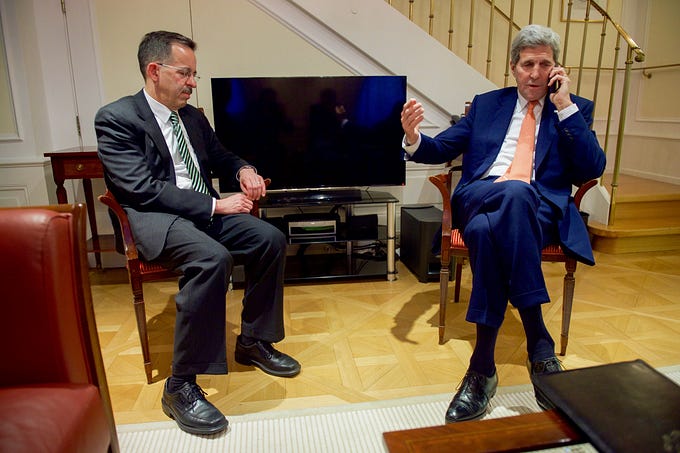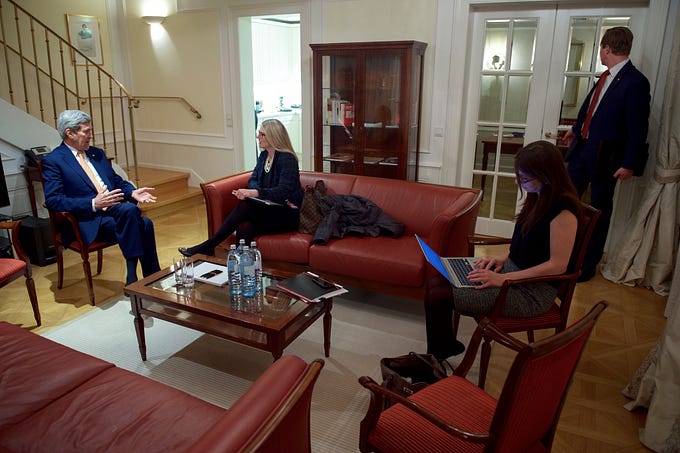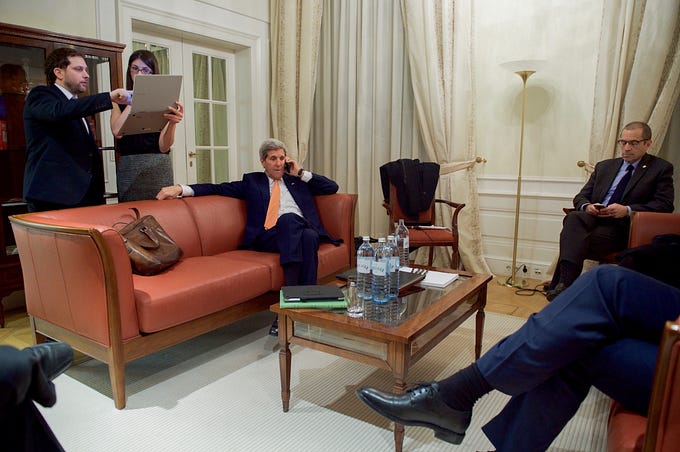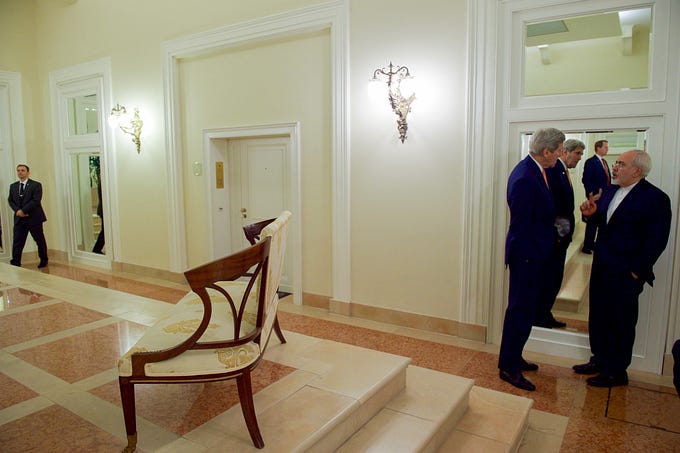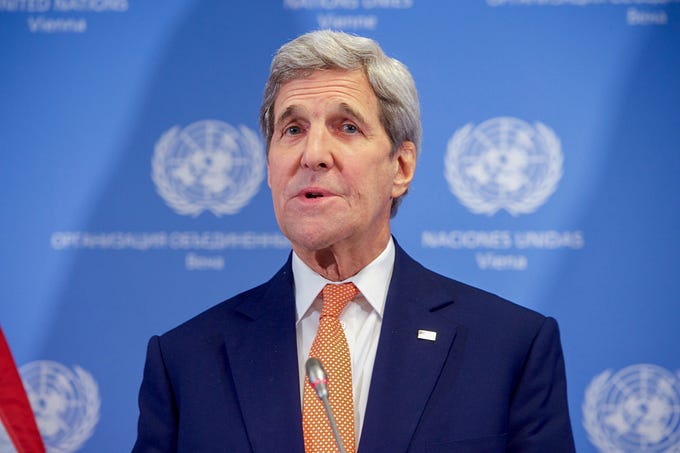John Kerry was also in the military during Viet Nam and his record there is dubious at best. After discarding his war medal and speaking of the shame and sham of the Viet Nam war he went on to politics. He has taken the Oath of office more than once. Surely at some point he would GET the point. But now, he has officially in his own words crossed the Rubicon.
Something about ‘all enemies foreign and domestic’ come to mind and both John Kerry and Josh Earnest both admit that Iran has long-standing support for terrorism.
TheHill: Some money from Iran’s sanctions relief is likely to go to terrorists, Secretary of State John Kerry acknowledged Thursday. Still, he said, he has yet to see that happen, adding there will be consequences if Iran uses the money to fund terrorism.
“I think that some of it will end up in the hands of the IRGC or other entities, some of which are labeled terrorists,” he said in an interview with CNBC, referring to the Iran Revolutionary Guard Corps.
Over the weekend, the United States lifted sanctions related to Iran’s nuclear program after it certified Tehran was in compliance with the nuclear agreement.
Lawmakers opposed to the deal have argued that the billions of dollars Iran gets after sanctions are lifted will be funneled into supporting terrorist organizations.
In an interview from the World Economic Forum in Switzerland, Kerry conceded the United States can’t prevent that from happening.
“You know, to some degree, I’m not going to sit here and tell you that every component of that can be prevented,” he said. “But I can tell you this: Right now, we are not seeing the early delivery of funds going to that kind of endeavor at this point in time.”
Of the $100 billion to $150 billion in sanctions relief, Kerry estimated Iran would end up with $55 million because some of the money is obligated to foreign debts.
He later told a group of reporters on the sidelines of the forum that the Revolutionary Guards are “already complaining that they are not getting the money,” according to The Associated Press.
“If we catch them funding terrorism, they’re going to have a problem in the U.S. Congress and other people, obviously,” he said.
A group of Republican senators vowed Thursday to introduce new sanctions should the administration not take a tough stance against the country.
Enter Josh Earnest, the White House spokesperson:
FreeBeacon: White House spokesman Josh Earnest said Thursday it was “entirely likely” and “even expected” that Iran will continue to support terrorism as it receives tens of billions of dollars in sanctions relief through the Iran nuclear deal.
The deal brokered by the Obama administration and other world powers gives Iran, the world’s largest state sponsor of terrorism, $100 billion in sanctions relief in exchange for compliance with the agreement meant to stop the rogue regime from getting nuclear weapons.
After Secretary of State John Kerry acknowledged Thursday that “some” Iran deal money would go to terrorists, CBS reporter Margaret Brennan asked Earnest at the White House briefing whether he agreed.
“I think that reflects his rather logical conclusion that a nation that supports terrorism may use some of the money that’s coming into the country to further support terrorism,” Earnest said. “The thing that’s important for people to recognize is that critics of this agreement often exaggerate the value of the sanctions relief that Iran will obtain, and they often overlook the rather severe economic priorities that are badly underfunded inside of Iran.”
Earnest said the White House had been honest about acknowledging that the nuclear deal would not assuage their concerns about Iran’s “bad behavior.”
“It is entirely likely, I think it’s even expected, that Iran will continue to support terrorism, but because of Iran’s intention that we assess to continue to support terrorism, that’s what makes it so important that we prevent them from obtaining a nuclear weapon,” Earnest said.
“To be clear, what you’re saying is while, some may conclude, and it would be logical to conclude, that some monies may flow to groups labeled terrorists, you think you can mitigate the threat, but you do say it could flow there,” Brennan said.
“Uh, well, we’ve been candid about that possibility, and that assessment is drawn from Iran’s longstanding support for terrorism,” Earnest said. “Again, that longstanding support for terrorism is what motivated us to prevent them from obtaining a nuclear weapon.”






